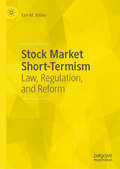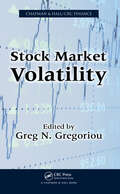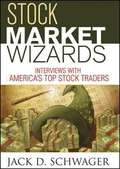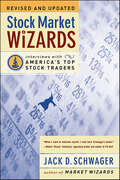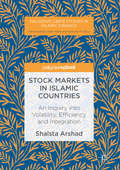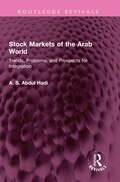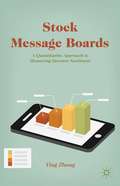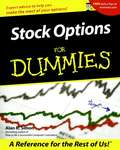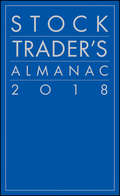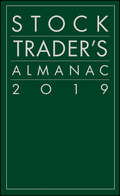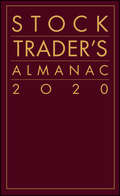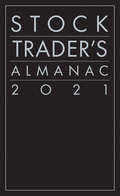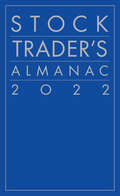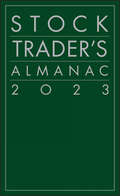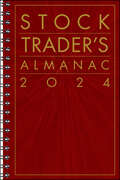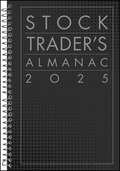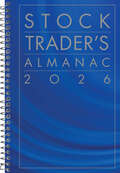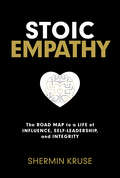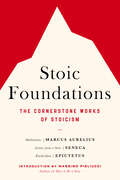- Table View
- List View
Stock Market Short-Termism: Law, Regulation, and Reform
by Kim M. WilleyConsideration of harmful short-termism in capital markets is prevalent amongst legal and business academics. It is also garnering increased attention in corporate board rooms and executive suites, and from the investing public. As a result, correcting perceived short-termism in capital markets has become a rationale for reform used by regulators across the globe. Despite the considerable attention given to this phenomenon, there has not yet been a comprehensive book analyzing the perceived short-termism problem, its sources and causes, and reform efforts undertaken to date. This book fills this gap by documenting the rise of the short-termism discussion, analyzing the significance of the problem, and considering the proposed legal remedies. Based on this analysis, a framework for effective short-termism reform is offered.
Stock Market Volatility (Chapman & Hall/CRC Finance Series)
by Greg N. GregoriouUp-to-Date Research Sheds New Light on This Area Taking into account the ongoing worldwide financial crisis, Stock Market Volatility provides insight to better understand volatility in various stock markets. This timely volume is one of the first to draw on a range of international authorities who offer their expertise on market volatility in devel
Stock Market Wizards: Interviews with America's Top Stock Traders
by Jack D. SchwagerThis decade has witnessed the most dynamic bull market in US stock history, a collapse in commodity prices, and dramatic failures in some of the world's leading hedge funds. How have some traders managed to significantly outperform a stock market that, until recently, moved virtually straight up? This book will feature interviews with those traders who achieved phenomenal success, from an Ohio farmer who has constantly made triple-digit returns, to a Turkish emigre who transformed a $16000 account into $6 million, to spectacularly successful professional hedge-fund managers such as Michael Lancer of the Lancer Group and Michael Masters of Capital Management. Today, the action is on the stock market. This book will be a must-have for that sector, as well as for the legions of individuals who eagerly bought Market Wizards.
Stock Market Wizards: Interviews with America's Top Stock Traders
by Jack D. SchwagerThe world’s top stock traders reveal the secrets to their success in this updated volume by the acclaimed author of Market Wizards.Since his 1989 classic Market Wizards, Jack D. Schwager has gotten inside the minds of high-performing traders like no one else can. In Stock Market Wizards he delves into the wild financial landscape of the twenty-first century: a time that witnessed the most dynamic bull market in US stock history, a collapse in commodity prices, dramatic failures in some of the world′s leading hedge funds, the burst of the Internet bubble, a fall into recession and subsequent rumblings of recovery. Who were the market wizards during this tumultuous financial period? How did some traders manage to significantly outperform a stock market that during its heyday moved virtually straight up?This book features interviews with a variety of traders who achieved phenomenal financial success during the glory days of the Internet boom. In contrast with the first two Market Wizard books, which included traders from a broad financial spectrum—stocks, bonds, currencies and futures—this volume will focus on traders in the stock market.
Stock Markets in Islamic Countries
by Shaista ArshadThis book explores the volatility, efficiency and integration of stock markets in Islamic countries. It presents recent trends, growth and performance, before moving on to explore how patterns change during different business cycles for short-term and long-term investors, and ranks the efficiency of the various markets. It addresses how the level of market integration has been affected during different economic periods, and concludes by summarising the performance of the stock markets, suggesting potential future directions for these markets.
Stock Markets of the Arab World: Trends, Problems, and Prospects for Integration (Routledge Revivals)
by A. S. Abdul HadiFirst published in 1988, Stock Markets of the Arab World provides a sound description and analysis of the stock market situation in Arab countries and an evaluation of previous attempts at the integration of capital markets. Foreign interest in the oil producing Arab countries has grown due to the accumulation of international reserves. Oil producers are looking for an alternative to their near-term investments in United States Securities through a diversification of their economies. This book argues that these countries could profitably invest these reserves through an integration of their securities markets. It also says that prospects of increased linkages among Arab domestic markets do exist. This is an interesting read for scholars and researchers of Middle East studies, Arab economy and economics in general.
Stock Message Boards
by Ying ZhangNew media is playing an important role in the financial world. Rapid growth in stock market message boards, chat rooms, and other electronic means for investors to share market information makes clear the ever-increasing demand for online stock trading. In addition to an increasing number of related sites and apps, growth in the number of investors participating has exploded. The U. S. Securities and Exchange Commission and the Federal Trade Commission are especially interested in tracking the activities on stock market message boards in order to protect market credibility. Stock Message Boards provides empirical data to reveal how online communication not only impacts stock returns, but also volatility, trading volume, and liquidity, as well as a firm's value and reputation. Zhang demonstrates the long-term value of stock market message boards by using simple mathematics and statistics to show readers how to measure message board activities. This work argues that online message boards are more effective for small capitalization stocks than large capitalization stocks, and more prominent for financially-distressed firms than financially-sound firms.
Stock Options For Dummies (For Dummies Ser.)
by Alan R. SimonIf you’re like the majority of the estimated 12 million employees in the U.S. who have stock options as a key component to their compensation packages, you have a vague notion, at best, of how options work and what they can mean to your financial well being. What’s the vesting schedule for your shares and how will their strike price be set? What type of stock option grant will you receive, an ISO (incentive stock option) or an NQSO (non-qualified stock option)? What tax rules apply to your option program? Your financial future could depend on your knowing the answers to these and other questions regarding your company’s stock option plan. Confused by all the brouhaha surrounding stock options? Let expert Alan Simon demystify this often-confusing investment vehicle for you. Featuring clear explanations of how your stock options might make you money—or not—this friendly guide fills you in on what you need to know to: Understand different types of stock options Read and find traps in your stock option agreement Evaluate the pros and cons of company investment vehicles Assess vesting schedules and tax laws Tap Web resources Simon demystifies the jargon, rules, and tax consequences of stock options. He provides a realistic picture of what to expect from your options, and he helps you see past the hype to understand what your employer is really offering. Important topics covered include: What you need to know before accepting a compensation package that includes options Developing a stock option philosophy and clear-cut goals Knowing whether you’re being treated fairly by your company Making sense of the language of stock options agreements Getting a handle on key restrictions on how you exercise your options Stock option valuation Tax rules and how they apply to different types of options How stock options can be affected by changes at your company Stock Options For Dummies is the only guide you’ll need to get the most out of this important investment vehicle.
Stock Trader's Almanac 2018
by Jeffrey A. HirschThe best data in the business, updated for 2018 Stock Trader's Almanac 2018 provides the cleanest historical data in the business to give traders and investors an advantage in the market. The 2018 edition is consistent with decades of the Stock Trader's Almanac showing you the cycles, trends, and patterns you need to know in order to invest with minimum risk and maximum profit. Updated with the latest numbers, this indispensable guide is organized in a calendar format to provide monthly and daily reminders, including upcoming opportunities to grab and dangers to avoid. Proprietary strategies include the Hirsch Organization's Best Six Months Switching Strategy, the January Barometer, and the Four-Year Presidential Election/Stock Market Cycle, arming you with the tools savvy investors use to achieve their market goals. Trusted by Barron's, The Wall Street Journal, the New York Times, and other respected market authorities, this indispensable guide has helped generations of investors make smart market moves. This new edition provides the same level of invaluable guidance, with the latest data straight from the vault. Access the most trusted historical market data available Identify patterns and trends you won't find anywhere else Get advance notice about upcoming risks and opportunities Bring accuracy to your forecasting and confidence to your investing Analytical tools are essential to successful investing, but they're only as useful as the data is accurate. Even the most beautifully designed model cannot forecast accurately based on incomplete, misleading, or inaccurate numbers; data quality is the bedrock of your entire investing strategy, and when it comes to data, cleanliness is next to profitability. Get the edge this year with the best data in the business, plus a wealth of valuable strategies in the Stock Trader's Almanac 2018.
Stock Trader's Almanac 2019 (Almanac Investor Series)
by Jeffrey A. HirschThe best data in the business, updated for 2019 Stock Trader's Almanac 2019 provides the cleanest historical data in the business to give traders and investors an advantage in the market. The 2019 edition is consistent with decades of the Stock Trader's Almanac showing you the cycles, trends, and patterns you need to know in order to invest with minimum risk and maximum profit. Updated with the latest numbers, this indispensable guide is organized in a calendar format to provide monthly and daily reminders, including upcoming opportunities to grab and dangers to avoid. Proprietary strategies include the Hirsch Organization's Best Six Months Switching Strategy, the January Barometer, and the Four-Year Presidential Election/Stock Market Cycle, arming you with the tools savvy investors use to achieve their market goals. Trusted by Barron's, The Wall Street Journal, the New York Times, and other respected market authorities, this indispensable guide has helped generations of investors make smart market moves. This new edition provides the same level of invaluable guidance, with the latest data straight from the vault. Access the most trusted historical market data available Identify patterns and trends you won't find anywhere else Get advance notice about upcoming risks and opportunities Bring accuracy to your forecasting and confidence to your investing Analytical tools are essential to successful investing, but they're only as useful as the data is accurate. Even the most beautifully designed model cannot forecast accurately based on incomplete, misleading, or inaccurate numbers; data quality is the bedrock of your entire investing strategy, and when it comes to data, cleanliness is next to profitability. Get the edge this year with the best data in the business, plus a wealth of valuable strategies in the Stock Trader's Almanac 2019.
Stock Trader's Almanac 2020 (Almanac Investor Series)
by Jeffrey A. HirschThe best data in the business, updated for 2020 Stock Trader's Almanac 2020 provides the cleanest historical data in the business to give traders and investors an advantage in the market. The 2020 edition is consistent with decades of the Stock Trader's Almanac showing you the cycles, trends, and patterns you need to know in order to invest with minimum risk and maximum profit. Updated with the latest numbers, this indispensable guide is organized in a calendar format to provide monthly and daily reminders, including upcoming opportunities to grab and dangers to avoid. Proprietary strategies include the Hirsch Organization's Best Six Months Switching Strategy, the January Barometer, and the Four-Year Presidential Election/Stock Market Cycle, arming you with the tools savvy investors use to achieve their market goals. Trusted by Barron's, The Wall Street Journal, the New York Times, and other respected market authorities, this indispensable guide has helped generations of investors make smart market moves. This new edition provides the same level of invaluable guidance, with the latest data straight from the vault.
Stock Trader's Almanac 2021 (Almanac Investor Series)
by Jeffrey A. HirschGrab your very own crystal ball for the 2021 financial markets The 2021 Stock Trader’s Almanac is your shortcut to understanding the cycles, trends, and patterns that will define stock trading in 2021. Based on strategies that have outperformed the S&P 500 by over 325% since 2001, the Almanac offers you proven and proprietary trading strategies, including Hirsch Holdings’ “Best Six Months Switching Strategy,” the January Barometer, the Four-Year Presidential Election/Stock Market Cycle, and top Sector Seasonalities. The Almanac has been trusted by Barron’s, the Wall Street Journal, the New York Times, and countless men and women alike since 1968. Organized in calendar format to keep you on top of upcoming opportunities you can’t afford to miss, this book will demonstrate each day why it’s relied upon by top traders, investors, and money managers. Perfect for stock trading novices, seasoned market pros, and those who have yet to dip their toe into the lucrative world of stock trading, the 2021 Stock Trader’s Almanac is your ticket to a successful 2021.
Stock Trader's Almanac 2022 (Almanac Investor Series)
by Jeffrey A. HirschThe Most Trusted Almanac Used by Savvy Investors to Profit Year after Year! Created by Yale Hirsch in 1967, the Stock Trader's Almanac has delivered money-making insights and strategies to investors for more than six decades. The Almanac originated such important market phenomena as the "January Barometer" and the "Santa Claus Rally" and was instrumental in popularizing other tradable strategies, such as "The Best Six Months Strategy" (commonly known as "Sell in May and Go Away") and the four-year Presidential Election Cycle. Mr. Hirsch imparted his knowledge of the stock market to his son, Jeffrey Hirsch. who joined the organization as a market analyst and historian under the mentorship of his father in 1990 and became editor-in-chief some years later. Even since, Jeff has carried on his father's tradition of constantly improving the Stock Trader's Almanac and has been tireless in his efforts to explain how investors can use the Stock Trader's Almanac to beat the market. Jeff regularly appears on major news networks such as CNBC, CNN and Bloomberg; he is quoted extensively in major newspapers and financial publications; and he is in high demand as conference speaker. In short, he is the media's "go-to guy" on all things related to applying the lessons of history to today's stock market. The 2022 Stock Trader’s Almanac, the 55th Annual Edition, continues its rich tradition of showing you the cycles, trends, and patterns you need to know in order to trade and/or invest with reduced risk and for maximum profit. Trusted by Barron's, The Wall Street Journal, the New York Times, and many other respected market authorities, this indispensable guide has helped generations of investors. Order your copy to make smarter, more profitable investment decisions in 2022.
Stock Trader's Almanac 2023 (Almanac Investor Series)
by Jeffrey A. HirschKeep your finger on the pulse of the stock market with the latest data and advice from the gold standard in trading resources In the 2023 Edition of Stock Trader's Almanac, celebrated analyst and trader Jeffrey A. Hirsch delivers the latest installment of the groundbreaking money-making strategy guide that has been guiding successful traders since 1967. The first trading handbook to recognize important phenomena like the "January Barometer" and the "Santa Claus Rally," Stock Trader's Almanac has also popularized crucial timing strategies, including the four-year Presidential Election Cycle and the Best Six Months Switching Strategy. In this latest edition, the author shows you how to maximize return and minimize risk using the cycles, trends, and patterns he uses to generate market-leading profits. You'll find: Month-by-month strategies to master the market and deliver reliable, outsized investment returns Explanations of seasonal trends that reappear year after year Ways to take advantage of cyclical, holiday patterns with real impact on your bottom-line A can’t-miss resource for day traders, market enthusiasts, and retail investors, Stock Trader's Almanac 2023 continues the book's celebrated tradition of timely stock market advice combined with tried-and-true guidance based on extensive historical data.
Stock Trader's Almanac 2024 (Almanac Investor Series)
by Jeffrey A. Hirsch57th edition of the gold standard in US stock market trend, patterns, and cycles In Stock Trader’s Almanac 2024, veteran trader and market strategist Jeffrey Hirsch delivers the latest edition of the most trusted source used by traders around the world to make sense of the complexities of the US stock market. You’ll master key cycles and trends, including the “January Barometer,” the “Santa Claus Rally,” the “Best Six Months,” and the four-year “Presidential Election Cycle” as you learn to trade and invest with confidence. You’ll explore strategies for getting a handle on increased market volatility, identifying past periods of exceptional price movement in the market, as well as streaks of positive and negative performance likely to repeat themselves. You’ll also find: Month-by-month strategies that deliver reliably outsized market returns based on cyclical trends Key explanations and descriptions of seasonal and annual cycles that consistently repeat themselves, year after year Strategies and techniques that promise—and deliver—a sizeable impact on your investing bottom-lineFor 57 years, the Almanac has offered savvy investors the freshest data and most insightful advice. Stock Trader’s Almanac 2024 is the comprehensive roadmap to investing eagerly anticipated by day traders, long-term investors, and portfolio managers alike.
Stock Trader's Almanac 2025 (Almanac Investor Series)
by Jeffrey A. Hirsch58th Annual Edition of the leading resource on US stock market trend, patterns, and cycles Neatly organized in an accessible calendar format, Stock Trader's Almanac 2025 enables traders around the world to make sense of the complexities of the US stock market by recognizing historical cycles, trends, and patterns that are essential to making sound investment decisions. This 58th Annual Edition has been thoroughly revised for 2025 to help readers on monthly and daily basis, explaining a wealth of proven proprietary strategies including the “January Barometer,” the “Santa Claus Rally,” the “Best Six Months,” and the four-year “Presidential Election Cycle.” Edited by veteran trader and market strategist Jeffrey Hirsch, this 2025 Almanac is a testament to the original iconic work founder Yale Hirsch created in the first 1968 edition and the over five decades of behavioral finance thought leadership it has provided since. The Almanac remains the most valuable trader's desk reference on Wall Street and this year's edition is packed with seasonal and historic investing insights for the year ahead including: How our Presidential Elections affect the economy and the stock market—just as the moon affects the tides Post-Election Years Best Year of the 4-Year Cycle Since 1985 How the passage of the Twentieth Amendment to the Constitution fathered the January Barometer Why there is a significant market bias at certain times of the day, week, month and year Market behavior three days before and after the holidays Updates investment knowledge and informs you of new techniques and tools. Is a monthly reminder and refresher course. Alerts you to both seasonal opportunities and dangers. Furnishes a historical viewpoint by providing pertinent statistics on past market performance. Supplies forms necessary for portfolio planning, record keeping and tax preparation On the desks of Top Money Managers since 1968, Stock Trader's Almanac 2025 is an essential resource for both retail and institutional investment professionals seeking to understand recurring patterns in the US stock market and consistently maximize profit potential.
Stock Trader's Almanac 2026 (Almanac Investor Series)
by Jeffrey A. HirschThe 59th Annual Edition of the leading desk reference on US stock market trends, seasonal patterns, and cycles In Stock Trader's Almanac 2026, veteran trader and market strategist Jeffrey Hirsch offers an up-to-date and effective guide through the complexities of the United States stock market. It catalogues the historical cycles, trends, and seasonal patterns that you need to understand to make sound investment decisions. This is the 59th Annual Edition of the Almanac, thoroughly updated and revised to ensure it retains its place as the preeminent, hands-on guide for US stock traders. It's organized in an accessible calendar format, demonstrating the proven, proprietary strategies – based on decades of carefully collected data – like the “January Barometer,” the “Santa Claus Rally,” the “Best Six Months,” and the four-year “Presidential Election Cycle.” Stock Trader's Almanac 2026 remains the most profitable and valuable trading reference on Wall Street. It includes: Explanations of how the four-year presidential election cycle affects the economy and the stock market How midterm election years are a bottom picker's paradise How to avoid the weak spot of the 4-year cycle Q2-Q3 midterm year and capitalize on the sweet spot that begins in Q4 Why a 50% gain in the Dow is possible from its 2026 low to its 2027 high What the Twentieth Amendment to the Constitution of the United States has to do with the “January Barometer” and what it means for you How to take advantage of regular, significant market bias at certain times of the day, week, month, and year How holidays predictably impact market behavior Seasonal opportunities and risks Pertinent statistics on past market performance Useful resources for portfolio planning, record keeping, and tax preparation A favorite resource for top money managers since 1968, Stock Trader's Almanac 2026 is perfect for retail and institutional investment professionals seeking to understand recurring patterns in the US stock market and maximize their profit potential.
Stock or Cash? The Trade-Offs for Buyers and Sellers in Mergers and Acquisitions
by Mark L. Sirower Alfred RappaportIn 1988, less than 2% of large deals were paid for entirely in stock; by 1998, that number had risen to 50%. The shift has profound ramifications for shareholders of both the acquiring and acquired companies. In this article, the authors provide a framework and two simple tools to guide boards of both companies through the issues they need to consider when making decisions about how to pay for--and whether to accept--a deal. First an acquirer has to decide whether to finance the deal using stock or pay cash. Second, if the acquirer decides to issue stock, it then must decide whether to offer a fixed value of shares or a fixed number of them. Offering cash places all the potential risks and rewards with the acquirer--and sends a strong signal to the markets that it has confidence in the value not only of the deal but in its own stock. By issuing shares, however, an acquirer in essence offers to share the newly merged company with the stockholders of the acquired company--a signal the market often interprets as a lack of confidence in the value of the acquirer's stock. Offering a fixed number of shares reinforces that impression because it requires the selling stockholders to share the risk that the value of the acquirer's stock will decline before the deal goes through. Offering a fixed value of shares sends a more confident signal to the markets, as the acquirer assumes all of that risk. The choice between cash and stock should never be made without full and careful consideration of the potential consequences. The all-too-frequent disappointing returns from stock transactions underscore how important the method of payment truly is.
Stock-Based Compensation at Twitter
by Mike Young Jonas Heese Zeya Yang"Olivia Nash, an analyst at leading hedge fund BlueShark Capital Management, sat back and popped open a fresh can of Kiwi LaCroix as she looked out the pristine glass window in her office. Olivia was part of BlueShark’s technology sector coverage team, having been with the firm since completing her MBA five years ago. She had just finished listening to the hour-long earnings call for Twitter’s Q4 2017 results. <P> Was Twitter doing well? That depended on which numbers she chose to believe. According to Generally Accepted Accounting Principles (GAAP), Twitter had recorded a $108M net loss for 2017. But on the earnings call, CEO Jack Dorsey and CFO Ned Segal had emphasized a slightly different and much better-looking metric: non-GAAP net income of $329M. This adjusted version of net income was a measure Twitter had defined itself when it first went public in 2013. The biggest difference between the two was that Twitter’s non-GAAP net income stripped out stock-based compensation expense."
StockX: The Stock Market of Things
by Annelena Lobb Julia Kelley Chiara Farronato John J HortonFounded in 2015 by Dan Gilbert, Josh Luber, and Greg Schwartz, StockX was an online platform where users could buy and sell unworn luxury and limited-edition sneakers. Sneaker resale prices often fluctuated over time based on supply and demand, creating a robust secondary market that bore similarities to the stock market. Inspired by these similarities, StockX's co-founders created a secondary platform that tracked sneaker resale prices over time and that emphasized authenticity, anonymity, and transparency. In 2017, StockX began to experiment with ways to expand from the secondary market into the primary market, using a new type of online auction known as an initial product offering (IPO). Based on the results of its first IPOs, was StockX on the right track with its strategy to expand into the primary market?
StockX: The Stock Market of Things (Abridged)
by Annelena Lobb Julia Kelley Chiara Farronato John J HortonFounded in 2015 by Dan Gilbert, Josh Luber, and Greg Schwartz, StockX was an online platform where users could buy and sell unworn luxury and limited-edition sneakers. Sneaker resale prices often fluctuated over time based on supply and demand, creating a robust secondary market that bore similarities to the stock market. Inspired by these similarities, StockX's co-founders created a secondary platform that tracked sneaker resale prices over time and that emphasized authenticity, anonymity, and transparency. In 2017, StockX began to experiment with ways to expand from the secondary market into the primary market, using a new type of online auction known as an initial product offering (IPO). Based on the results of its first IPOs, was StockX on the right track with its strategy to expand into the primary market?
Stoffliche Nutzung von Braunkohle
by Bernd Meyer Steffen Krzack Heiner GutteDas Fachbuch beschäftigt sich mit Braunkohle als einheimischer Energierohstoff mit hohem Nutzungspotential für die chemische Industrie, die Metallurgie und andere Wirtschaftszweige. Der komplexe Aufbau dieses Naturprodukts ist einerseits eine große Herausforderung für dessen Verarbeitung, erlaubt andererseits aber auch eine große Bandbreite der stofflichen Wertschöpfung.Ausgehend von Grundlagen und Verfahren der stofflichen Braunkohlenutzung werden Forschungsergebnisse zu neuen Analysemethoden, zu grundlegenden prozess- und werkstofftechnischen Untersuchungen, zu neuen Ansätzen für Verfahrens- und Komponentenentwicklungen sowie zu neu geschaffenen Modellierungs- und Simulationswerkzeugen vorgestellt. Die Einzelthemen sind entlang der Wertschöpfungskette vom Rohstoff zum Produkt, auch unter Einbeziehung von Biomasse als nachwachsendem Energierohstoff, strukturiert.
Stoic Empathy: The Road Map to a Life of Influence, Self-Leadership, and Integrity
by Shermin KruseCorrect the power imbalances in your work and life with a science-backed practice that combines the rigor of Stoic philosophy with the relational impact of empathy.Stoicism combined with empathy may sound like a contradiction in terms. But when these seemingly opposing forces are harnessed together, they have the power to change your life.From surviving missile attacks and political oppression in Iran to leading high-stakes legal teams and negotiations in corporate America, Shermin Kruse's journey fuels her mission to merge empathy and stoicism as tools for navigating power, justice, and human connection in every facet of life. In this eye-opening book, she offers you this radical perspective shift—anchored in up-to-the-minute research—to help you navigate life's challenges with power and principles.We often think of empathy as an emotional stance: we feel what someone else is feeling. But Kruse outlines a form of empathy that&’s based in cognition, not emotion—a way for us to understand what the other person is thinking and feeling while keeping a distance from their feeling state—and shows us how we can strategically maneuver our level of engagement from &“emotional empathy&” to &“cognitive empathy&” in different circumstances. Then she utilizes Stoic philosophy and modern science to outline the how of emotional regulation and control. The bridge she builds between Stoicism and empathy gives us the knowledge and discipline we need to:Calmly assess the power dynamics of any situation Understand and manage our own emotions as well as the emotions of othersDefuse danger and turn conflict into connectionSkillfully steer a challenging conversation toward the result we wantWhether you're a leader striving to succeed in your role with integrity, an educator seeking to guide curious minds with compassion, a parent nurturing resilience in your children, or simply facing a personal or professional crossroads, Stoic Empathy is an essential toolkit for negotiating success in every area of your life.
Stoic Foundations: The Cornerstone Works of Stoicism
by Epictetus Marcus Aurelius SenecaAn essential guide to the core texts of Stoic philosophy, featuring a new introduction from Massimo Pigliucci, author of How To Be A Stoic Stoicism is a philosophy, a worldview, and a transformational practice. Throughout the centuries everyone from kings and presidents to Silicone Valley entrepreneurs have drawn inspiration and wisdom from Stoicism. The best way to learn about Stoic philosophy is always to go back to the foundation—the original texts, written by the great Stoic philosophers. Three writers form the bedrock of Stoic thought: Marcus Aurelius, a Roman Emperor; Seneca, a playwright and advisor; and Epictetus, a former slave turned philosopher and teacher. Stoic Foundations combines the work of these three pillars of Stoic thought into one essential volume, including Marcus Aurelius&’s Meditations, selections from Seneca&’s Letters from a Stoic, and Epictetus&’s Enchiridion. Though they were written millennia ago, these texts have resonated with readers across the centuries, offering powerful, clear guidance that remains relevant and transformative in the modern day. Featuring an insightful introduction from Massimo Pigliucci, author of How to Be A Stoic, Stoic Foundations is essential reading for anyone interested in exploring modern Stoicism and in reading the luminaries of Stoic philosophy in their own words.
